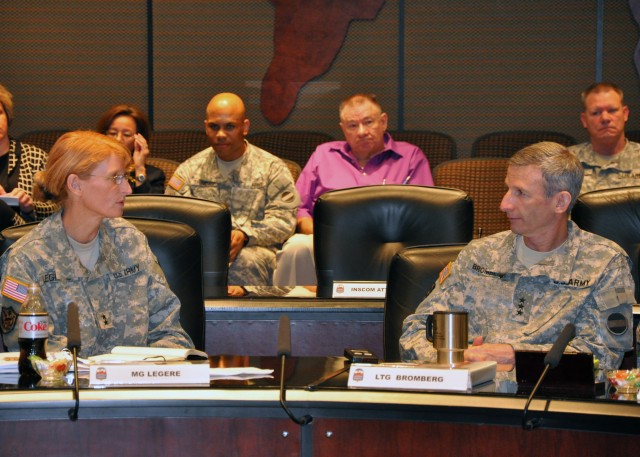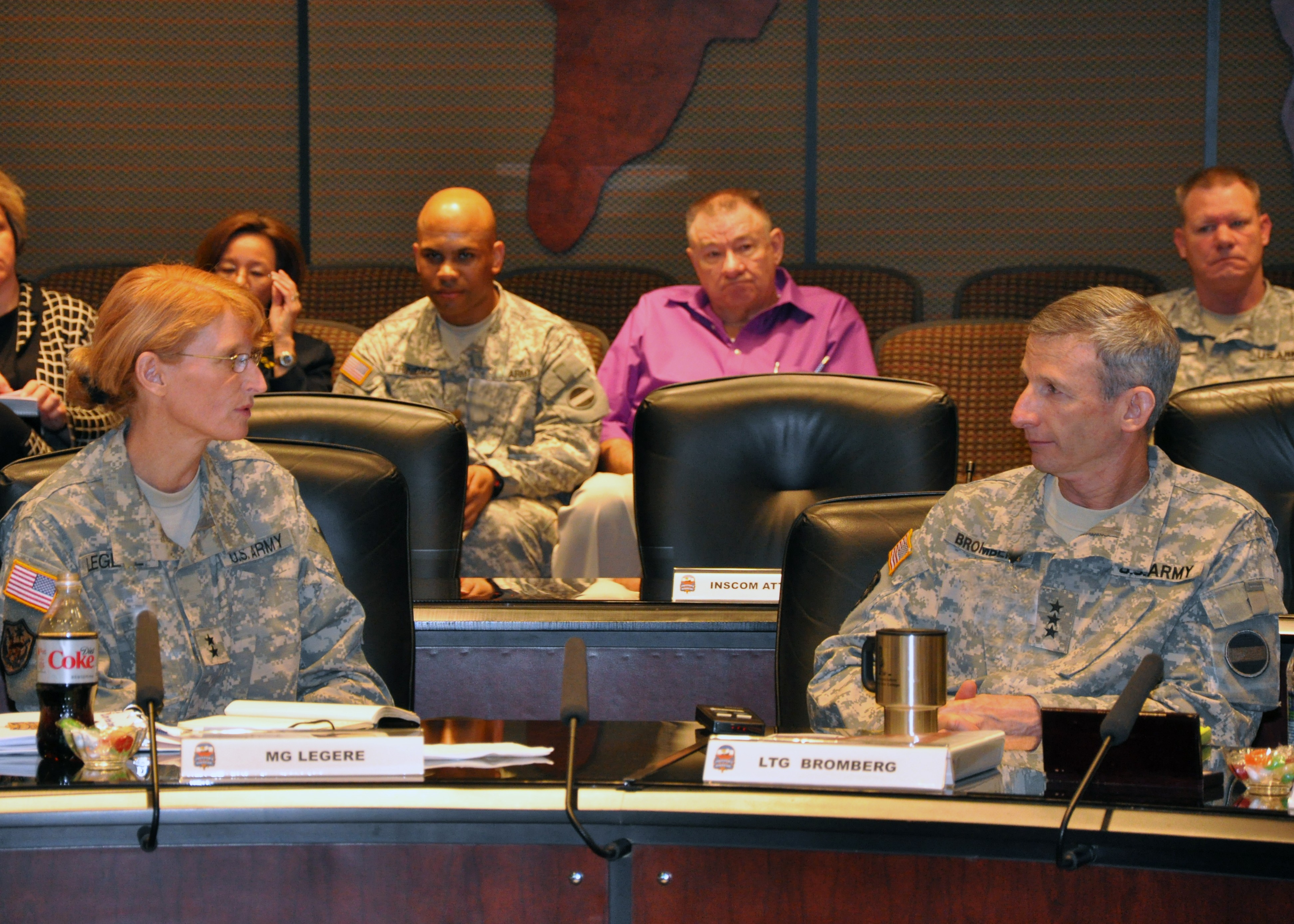
FORT MCPHERSON, Ga. (Mar. 24, 2011) - With an anticipated decision that will promote a closer working relationship between the Intelligence and Security Command (INSCOM) and U.S. Army Forces Command (FORSCOM), the two commands met here Thursday to discuss ways to optimize the processes that man, train, equip, certify, mobilize, deploy, and support military intelligence forces in support of Army Force Generation (ARFORGEN).
The meeting was held in the FORSCOM Kerwin Conference Room and provided the respective staffs of each command the opportunity to meet and brief each other. The purpose of the meeting and briefings was to educate both staffs on each others' roles supporting ARFORGEN, and to solidify unofficial, and pending official, alignments to optimize support to intelligence readiness.
The FORSCOM deputy commanding general, Lt. Gen. Howard Bromberg opened the day's activities by addressing the INSCOM staff, "First of all thanks for coming and thanks for participating. I think the important thing for today is a chance to share knowledge with one another about how we move forward."
INSCOM, headquartered at Fort Belvoir, Va., provided an orientation of their mission, organization and services for FORSCOM leadership. The command is compromised of 15 colonel-level subordinate commands, with over 16,800 Soldiers, Civilians and contractors in more than 180 locations over 30 countries to ensure leaders at all levels have access to the intelligence information they need, when and where they need it.
The FORSCOM staff, in turn, provided the Command Brief and an ARFORGEN overview.
INSCOM is assigned as a direct reporting unit to the Army G-2; however, given its role as the Army's operational intelligence command, and in the sourcing of conventional intelligence units through ARFORGEN, the request for INSCOM's realignment under the Readiness Core Enterprise (RCE), which is led by the Commanding General, FORSCOM, is appropriate now.
The RCE is a collaborative enterprise consisting of Army conventional operating forces and, as appropriate, those Army agencies, commands, and elements involved in optimizing ARFORGEN in support of conventional Army operating forces. The intent of INSCOM Day is to build a foundation between INSCOM and FORSCOM to improve intelligence unit readiness and support to ARFORGEN.
"This alignment has come about due to the global force provider for conventional army forces mission that FORSCOM has," said Mr. Michael Knippel, transformation integrator, G-3 Strategic Initiatives Division. "ARFORGEN is the Army's Core Mission Process and the FORSCOM commanding general manages ARFORGEN," he added.
At the opening of INSCOM Day, Maj. Gen. Mary Legere, commanding general of INSCOM said, "We really want to thank the FORSCOM staff for taking the time (yesterday) to sit down with us and discuss how we [INSCOM] do ARFORGEN and some of the issues we have and need help with."
"We have a slightly different process and we're going to try and harmonize some of those processes over time," she added.
INSCOM Day was the culmination of action level in-progress-reviews (IPR), staff to staff IPR's, a rehearsal of concept (ROC) drill, an INSCOM staff back brief to the FORSCOM Commanding General, and an INSCOM staff and FORSCOM staff meet-and-greet.
"To our FORSCOM team: thanks. We've been trying to get inside your ARFORGEN lexicon for awhile and today, now the rest of my staff understands what challenges that we have." said Maj. Gen. Legere at the conclusion to the day's activities.
From the discussions that began at the conclusion of the briefings, it seems that the INSCOM and FORSCOM staffs met the purpose of the day and are well on the way towards alignment.

Social Sharing